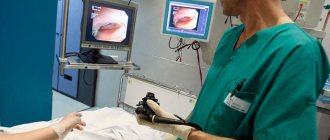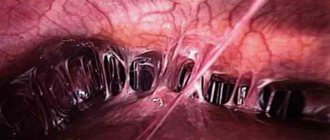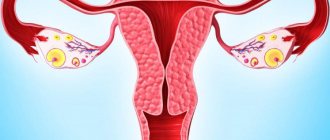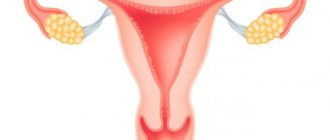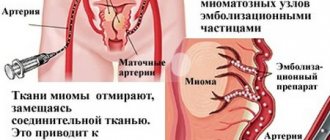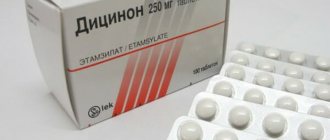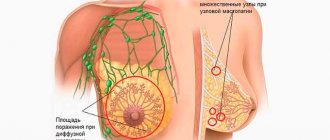- Indications for tubal HSG
- Preparation for the procedure and procedure for its implementation
- Contraindications for the study
HSG (hysterosalpingography) of the fallopian tubes is a diagnostic research method that consists of conducting an X-ray examination of the fallopian tubes for patency. The main indication for the procedure is difficulties in conceiving or carrying a pregnancy (frequent miscarriages, ectopic pregnancies, inflammation in the pelvic organs, etc.). The procedure is carried out in a hospital setting and the patient is constantly under the supervision of a doctor. HSG causes discomfort and in rare cases provokes the development of complications, but the opportunity to get answers to many questions and identify the cause of infertility for women is a more powerful argument than the consequences.
Indications for tubal HSG
Hysterosalpingography is performed if there are compelling indications. The gynecologist directs the procedure after examining the patient and, in the absence of other opportunities, to examine the condition of the uterus and the patency of the fallopian tubes. Indications for HSG:
- Infertility of unknown etiology or caused by hormonal imbalance.
- Suspicion of poor patency of the fallopian tubes, which provokes an ectopic pregnancy or causes problems with conception.
- The presence of diseases and inflammatory processes in the uterine cavity (endometrial hyperplasia, endometriosis, fibroids and others).
- Suspicion of tuberculosis of the internal genital organs.
- Infantilism of the uterus or abnormalities in the structure of the fallopian tubes.
- Suspicion of adhesions located in the uterus or fallopian tubes.
Research results
The method provides the most objective data on the condition of the organs of the reproductive system:
- identifies existing diseases and causes of infertility;
- allows you to assess the severity of the detected pathology;
- determines the shape, size and structure of the uterus;
- reveals pathological changes in the reproductive system.
Therefore, the study allows us to reliably determine the causes of the disorder, the area in which they arose and select the optimal treatment regimen.
Contraindications for the study
Ultrasound of fallopian tube patency cannot be performed if:
- acute inflammatory processes in the body, including those observed in the pelvic organs;
- acute respiratory infections and flu;
- serious pathologies of the cardiovascular system;
- kidney and liver diseases;
- uterine bleeding.
Testing for tubal patency using ultrasound and pregnancy are categorically incompatible. Therefore, before performing the test, it is necessary to do a pregnancy test.
Treatment of infertility and other disorders in the reproductive system of women is impossible without a full examination. We are waiting for you at Kamennoostrovsky Prospekt, 16 (metro stations Petrogradskaya, Chkalovskaya and Gorkovskaya) and at Kolomyazhsky Prospekt, 36/2 (metro stations Udelnaya, Pionerskaya).
https://youtu.be/hgwpbJDzMV4
Preparation for the procedure and procedure for its implementation
HSG of tubal patency requires careful preparation. This is due to the fact that the procedure is invasive and a dye is introduced into the body (uterus and fallopian tubes). Basic tips for preparing for the procedure include: abstaining from sexual activity 48 hours before HSG, stopping douching, using intravaginal suppositories and intimate hygiene products 7 days before the study. These drugs can negatively affect the microflora of the genital organs and distort the results of the study.
Before the procedure, a full gynecological examination, ultrasound of the pelvic organs is required, and the woman undergoes all the necessary tests to make sure there are no contraindications.
On the eve of the examination, you should perform an enema and shave your pubic hair. On the day of the examination, it is necessary to thoroughly wash the external genitalia. The procedure is carried out on an empty stomach, so you should refuse to eat, you are allowed to drink 1 glass of clean, non-carbonated water. Before HSG, you must empty your bladder.
Hysterosalpingography is performed in a hospital setting. The execution time depends on the goals of the study. Thus, to study the patency of the tubes and assess the condition of the cervix, the procedure is carried out in the second phase of the menstrual cycle; to identify endometriosis, the optimal time is 7-9 days of the cycle; If uterine fibroids are suspected, the examination can be carried out at any time when there is no menstrual flow.
For safety reasons, the procedure is carried out in the first two weeks of the uterine cycle - during this period the uterine mucosa is thin and does not block the exit from the fallopian tubes. In addition, at this time the woman is 100% not pregnant, so the study does not pose any danger. If the procedure is performed after ovulation, the patient is recommended to take a pregnancy test.
Procedure for conducting GHA:
- To conduct the study, the woman is placed on a special gynecological chair, where X-rays can be taken.
- The gynecologist performs a thorough gynecological examination using hands and mirrors.
- A cannula is inserted into the cervix and connected to a syringe filled with a contrast agent. Cardiotrast, urotrast and verografin are used as a coloring solution.
- A contrast agent is injected into the uterine cavity, which gradually fills it and moves through the fallopian tubes.
- Along with the distribution of the coloring liquid, a series of x-ray images are taken. The contrast agent reflects X-rays and allows you to accurately determine the contours of the uterus and fallopian tubes.
- At the end of the procedure, the doctor removes the cannula. The remaining dye is released from the vagina or absorbed into the blood and eliminated from the body naturally.
The procedure may cause discomfort or pain in the lower abdomen, which disappears a short time after the examination. For tubal HSG, anesthesia is usually not used, but if a woman has a very low sensitivity threshold, a mild pain reliever may be used.
As a result of studying X-ray images obtained as a result of HSG, the doctor determines the patency of the fallopian tubes and assesses the condition of the uterus and its structure. If the fallopian tubes are completely filled with contrast agent, then they have good patency. If there is adhesions or other obstacles to the movement of fluid, this will be reflected in the image.
At the end of the procedure, the woman may be bothered by nagging pain in the lower abdomen, and spotting or mucous discharge may be observed. To eliminate unpleasant symptoms, you can take mild painkillers.
Gynecologists do not recommend douching for three days after the procedure, or using suppositories or intimate hygiene products. It is advisable to limit bathing and visiting the bathhouse or sauna for a while.
After an HSG, a woman may experience a delay in her menstrual cycle for several days - this is normal and there is no need to worry about it.
According to statistics and studies, HSG of the fallopian tubes increases the likelihood of conception. This is due to the fact that the contrast agent improves the functioning of the uterine glands and stimulates the activity of the endometrium.
As a rule, the hysterosalpingography procedure occurs without complications. In rare cases, an allergy to the contrast agent may develop. Sometimes bleeding or exacerbation of inflammatory processes is observed if a woman suffers from chronic diseases.
Reviews from women about the procedure
Oh, these women! Before undergoing any gynecological procedure, each of us tries to find out everything about it in advance. Of course, everyone who was prescribed a tubal patency test was afraid of only two things - pain and diagnosis. In many reviews, girls say that the procedure for checking the fallopian tubes is very painful, but tolerable. Some of them were given an anesthetic before the catheter was inserted.
On various forums you can find many different reviews, it all depends on the type of procedure being performed. If the doctor has prescribed such a diagnosis, then it must be done, otherwise it is fraught with infertility.
What is the essence of the procedure?
To see the condition of the uterus and fallopian tubes on an x-ray, a special iodine-containing contrast agent is injected into their cavity through the vagina, which reflects x-rays. Then, using an x-ray, the doctor can see tumors, adhesions, inflammation - any pathology - in the image. Another goal is to determine whether the contrast that was infused through the vagina has exited through the fallopian tubes into the abdominal cavity. This will make it possible to judge the patency of the pipes.
In addition to HSG X-ray of the fallopian tubes, there is another type of hysterosalpingography - echo HSG, which is done using ultrasound. The meaning is the same. The only difference is that during an x-ray the doctor introduces contrast in portions to take several different pictures and track the dynamics, but during an ultrasound examination there is no such need - everything that happens in the pelvic and abdominal area is clearly visible on the ultrasound monitor. device in real time. Therefore, instead of contrast, saline is administered, and not gradually, but in one continuous stream.
Sometimes, this also has an additional therapeutic effect: under the pressure of a stream of saline solution, small adhesions can be smoothed out. Therefore, if only minor pathology interfered with conception, then it can easily be eliminated directly during HSG. It is not surprising that after such an ultrasound, many women finally become pregnant. Spontaneous conception also occurs after an x-ray, especially if an oil-based contrast agent was used during the procedure.
But doctors note: despite the possible beneficial therapeutic effects of echo-HSG, x-ray is still a more informative method and allows you to reproduce a more complete and accurate clinical picture. For example, if due to a spasm the walls of the tube are pressed against each other, on the ultrasound monitor it will look like a commissure and the doctor may misinterpret the result. It is not uncommon that after an ultrasound, the patient is again sent for an x-ray.
How to prepare for the procedure?
Regardless of how the HSG is performed - X-ray or ultrasound - the general recommendations that a woman should follow on the eve are the same.
Eliminate the presence of contraindications
To make sure that the patient is not pregnant, does not have HIV, syphilis and hepatitis, she will need to take:
- blood analysis;
- Analysis of urine;
- smear on flora.
In some cases, before HSG, the attending physician may refer the woman for an ultrasound of the pelvic organs.
You can't overeat
Some clinics offer an enema before the test and prohibit not only eating, but also drinking. During the last 2 hours before the HSG, no more than 1 glass of non-carbonated water is allowed. True, this rule does not apply to those who are undergoing an ultrasound. In this case, on the contrary, you need to drink as much as possible so that at the time of the study the bladder is full.
Need to give up
A week before HSG, you need to stop using tampons, vaginal suppositories, pills and douching.
In the interval between the start of a new cycle and the day of the HSG, you need to abstain from sexual intercourse, including protected ones.
